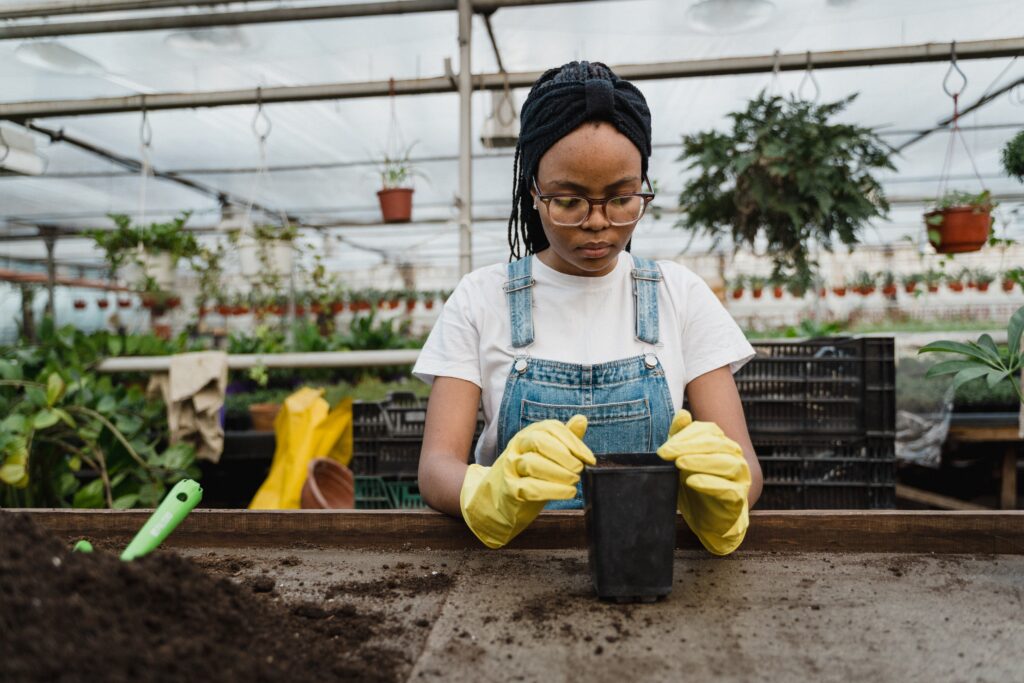In this blog post, I will write everything you need to know about how to grow finger limes. There are many ways to grow a finger lime tree. You can either start it from seeds or by using cuttings from an adult tree. I will explain the procedures on how to effectively grow a healthy finger lime tree. By the end of this article, you will find it easy to grow finger lime trees on your own.
Are finger limes hard to grow?
Finger limes are not that hard to grow but it takes time, a lot of time. Some finger lime trees take many years before they start to mature and bear fruits. The speed of your tree’s growth depends on you, the cultivator. There are 3 ways to grow a finger lime. You can either grow a lime tree from its fruit’s seeds or by cutting off the main plant. A finger lime tree can also be grown by using a method called grafting.
How to grow finger limes from seeds?

Find a suitable soil
Find a well-draining soil and put it in a container. Or you can simply place the finger lime seeds in a plastic bag filled with moist soil. The soil must be well-drained because too much water will hinder the germination process of the seeds. It is very crucial to keep your seedlings moist but not totally drenched in water. Finger limes can grow in almost any kind of soil, the only important thing to note is that they must not stand in stagnant water.
Planting seeds
Plant your seeds in the soil that you prepared about a quarter to half of an inch deep. The reason for the shallow depth is that a finger lime seedling’s size is smaller compared to the other tree. Planting it too deep will result in your finger lime seedlings suffocating. After planting the seeds, put them in a warm and sunny location.
Watering your seeds
Water your seeds every 3 to 4 days to keep the soil moist but not totally soaked in water. After several days and the seeds begin to sprout, you can transfer the seedlings into their own individual pots. This process will continue as your finger lime seedlings will keep on getting bigger and bigger.
Transplanting
If your finger lime tree is big enough, plant your tree outdoors if your place has a warm climate for a year-long growth of your lime tree. A finger lime tree thrives in places where it only has partial shade and direct exposure to sunlight. If you have a cold climate, it would be better to put your finger lime tree indoors placed in a big pot. A Finger limes can resist to minor frost, but if left outside at a temperature between 30°F to 40°F they will freeze and die. Potting your finger lime tree and placing it indoors is a must whenever the weather in your area gets a little colder.
Watering your lime tree
Like when it was a seed, you need to also water your finger lime tree every 3 to 4 days. In summer, you may need to water it even more as the soil easily dries up and appears to be crumbly. While in winter, you also need to lessen the amount of water you give to your finger lime plant because due to the climate, it won’t be able to soak as much moisture from the soil where your finger lime tree was planted.
Fertilizing
Between March and May, you can also fertilize your finger lime tree to prepare it for its growing season. You can use compost, animal manure, or even a bag of fertilizer that you can buy from stores. Apply them once per month starting from the month of July until October to encourage the finger lime tree to bloom more flowers.
Pruning
Remove every foliage, twig, and even fruits that have dark spots. A dark spot is an indicator of fungal disease because of that it must be addressed immediately. You need to prune away every part of the tree where you can see dark spots such as its leaves, branches, and even its fruits. Burn the infected parts instead of putting them in a compost bin as they will infect the rest of what is inside the compost. And if the dark spots persist, you can also consider moving your tree.
Applying Pesticides
Apply a pesticide if you notice bugs crawling or going near your tree. These bugs will draw the saps out of your tree’s trunk and branches. You can use natural pesticides or buy one from your local store.
How to grow finger limes from cuttings?
Secure your cutting
Prune a section of a branch around five to ten inches long from an adult finger lime tree. After removing the cutting, remove all the leaves and buds that are attached to it. You have to buy hormone powder from your local store and dip the cut end in it.
Choose How to Grow Your Cutting’s Roots
There are two ways to allow your cutting to grow roots. First is to place the end of the cutting in a container filled with water. The appropriate amount of water that should be about three inches long from the container’s base. Second, you can directly plant them in a pot or an open area with loamy soil also where water doesn’t stand. If you ultimately decide to start rooting your cuttings in water, add water every time the water inside the container evaporates. If you decide to let it root on the soil then keep the soil where your cutting has planted moist.
Repotting
After cutting successfully roots, you can transplant your cutting to a larger pot or directly into a bed of soil. As your cutting develops into a young tree, it is critical to maintain the soil’s moisture. This is also important to allow your cutting to develop a strong root system.
Find a suitable area
Place the rooting young tree in an area exposed to direct sunlight. Finger limes like being expose to sunlight. Water your young finger lime tree regularly to make sure the soil around it is moist but not totally wet. Watering them every 3 to 4 days is enough for a young finer lime tree.
Fertilizing
Applying compost, animal manure and even commercial fertilizers can also enhance the growth and development of your young finger lime tree. Apply the fertilizers once a month to ensure that the tree grows more productively. This procedure will boost the growth of your finger lime tree and will enable it to reach maturity in a much lesser timeframe.
Transplanting
As your finger lime tree gets bigger, you also need to transfer it to a much bigger pot to let its roots grow even more. This will help your young tree quicken its growth. And once it is big enough to be able to withstand the climate outside, you can choose to plant them in an open field instead. Choose a place that is exposed to direct sunlight.
Applying Pesticides
If you see your young finger lime tree infested with bugs and insects, you can also choose to apply pesticides on your tree. There are two types of pesticides that you can use; a natural pesticide or the one you can buy in your local stores.
How long does it take to grow finger limes?
The timeline of the finger lime tree bearing fruits depends on the way it had grown. Grafted finger lime trees start bearing fruit only 3 years after it was planted. Although it is just in small quantities. The larger quantity of fruits starts appearing in an average of 6 to 8 years after grafting a finger lime tree. A finger lime tree that had developed from a seedling may take up to 15 years to bear fruit. However, this estimation will ultimately be based on the one that is cultivating the finger lime. If it had taken care of properly, it will start maturing earlier than the estimated 15 years and will start bearing fruit.
Conclusion
As discussed, finger lime trees can grow in different ways. Although both ways take a very long time for the tree to mature, growing a finger lime from seed will take a longer time to bear fruits than growing it through grafting. Grafting will allow you to be able to harvest fruits from your finger lime trees in a smaller amount of time. Ultimately, the speed of your finger lime tree’s maturity depends on you. So you can’t just plant your finger lime tree cutting or seeds without knowing the proper ways first. You need to do some research and understand the right way to grow finger limes.
Meet Tomas Clayton, a seasoned plant gardener who has been passionate about horticulture since he was a child. Tomas John developed a love for the natural world and a strong appreciation for the beauty of plants while growing up on a farm.








